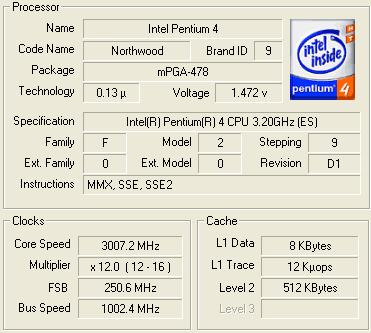Overclocking and Noise
Given the SB61G2 v3.0's new found front side bus limit in the BIOS, it would be rude not to check it out and see if it could go higher than 255MHz.First stop with the XPC was a 12 x 250MHz test, just to make sure basic limits and multiplier adjust on the semi-unlocked ES Pentium 4 were within reach and working.

Success, the 3000MHz final clock easy meat for the 3200MHz processor. Time for some more, this time with photographic, rather than screenshot, proof.

270MHz, the final stable front side bus speed (~57s for HEXUS Pifast), vindicates the new limits in the BIOS. While 355MHz is a push for any Pentium 4 chipset and motherboard, 270MHz is pretty respectable for the little XPC.
Just for giggles, some ClockGen loving was applied.

That's the maximum FSB obtained before an instant crash, useful in determining an upper target to aim for with some board modifications, should you wish to change your precious SB61G2 v3.0. Watch this space for a 300MHz front side bus attempt with some assistance from a voltage modification kit.
Noise
Acoustic hell is not something you have to suffer with Shuttle's XPC systems, Shuttle bestowing a semi-intelligent cooling system on all recent XPC systems in the last couple of years.With the SmartFan setting in the BIOS set to Ultra Low, the fan spins at a leisurely 2000rpm, down from the default 2000rpm, for all CPU core temperatures under 80°C. 2000rpm on the Shuttle's fan means a barely audible whisper.
There's also the ability to gradiate the fan speed as a function of CPU core temperature, gradually increasing the speed of the fan to its maximum of 4000rpm.
Overall, the hard disk and optical devices in the XPC are more likely to contribute to audible noise, compared to the SmartFan and northbridge coolers.









